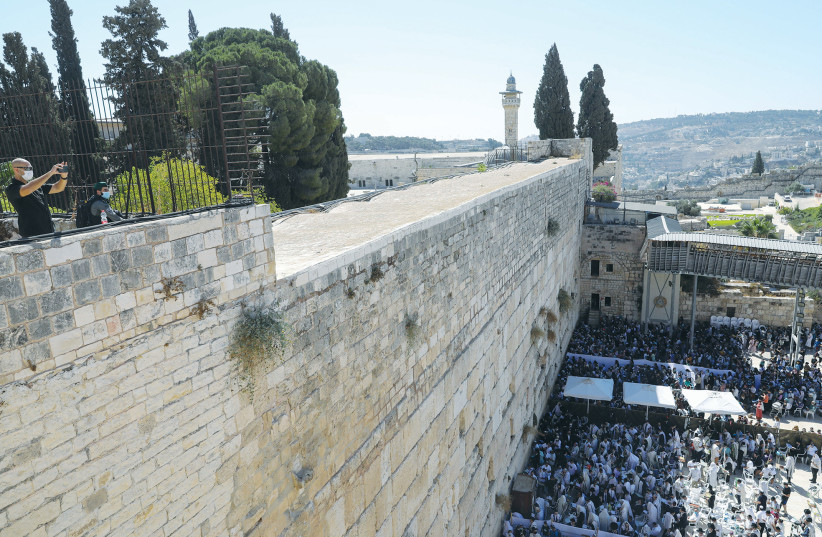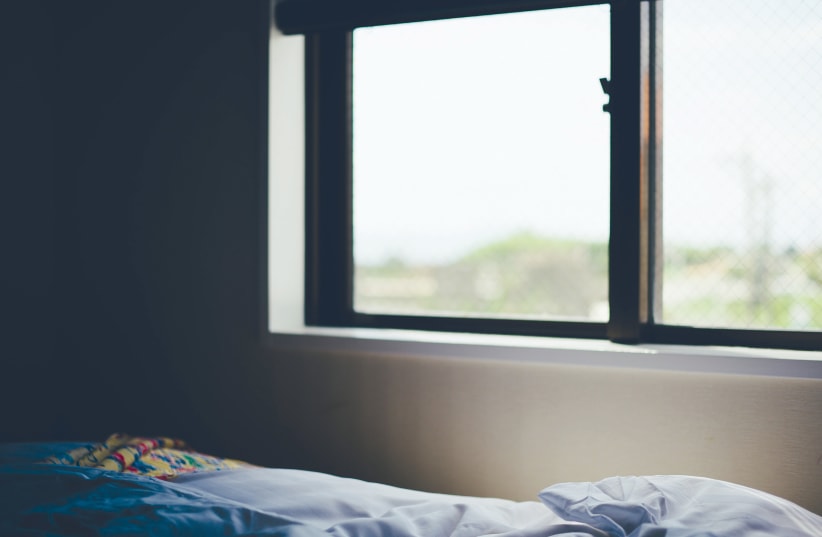As the airport taxi pulled into Jerusalem’s Graetz Street following Israel’s nearly two-year COVID-induced travel bans, certain architectural changes caught my eye.
The wide-berthed structure on the corner seemed to have lost its tenant, as the Mandel Foundation sign on the outside was gone. New construction was under way next door, with a three-story building replacing the previous cottage. The third structure on the street, the five-unit building housing my apartment, appeared intact, but a glass-enclosed beit midrash (study hall) was added to the Shir Hadash synagogue, which began services next door to me, a few months before I returned to my alternate residence in Riverdale, New York.
Before COVID, my wife, Miriam, and I, a retired academic, lived half the year in Israel, drawn back to America by the sway of 13 grandchildren. Now, having penetrated the restrictive, bureaucratic walls of travel to Israel, what was it like to spend one month in this pandemic-scarred sacred city?
Start-up activities included praying at the Kotel, buying transportation cards, renewing phone service and newspaper subscriptions and depositing money in my bank account to pay ongoing real estate and utilities costs.
Life-cycle events surfaced only a few days following our arrival. Arlene, a retired New York City high school math teacher, with whom, together with her husband, Phil, we exchanged Shabbat meals over the years, died from a prolonged illness. Following eulogies at the stark mortuary at Har Hamenuhot Cemetery, we were among some 100 mourners at her burial. Not far from Arlene’s grave, we walked to the year-old resting place of David Quint, my Daf Yomi melamed (instructor) for the final 25 years of his 52-year life. Our third cemetery visit was to the graves of Miriam’s parents, buried in a Gerrer Hassidim section.


On a lighter, rite de passage note, early on in our stay here, Miriam and I were honored to be escorts of the firstborn son of Tzvi and Rena at his brit. These relatives, hailing from New York City, arrived six months ago for Tzvi to study at the Mir Yeshiva. They hope to be joined on aliyah soon by his parents and nine siblings.
Schedule-wise, my days in Jerusalem began with davening at the conveniently located shul next door, followed by an English-language Daf Yomi session. On Monday and Thursday mornings, I joined some 30 other English-speaking retirees at an English-language kollel at Hazvi Yisrael Synagogue, led by dynamic native Englishman Rabbi Alan Kimche. Afterward, I usually went for a 40-minute run, strategically planned to minimize weight gain from this city’s delicious breads and cakes.
Over many days, we met friends, ran errands, finalized our last will and testament with our lawyer, and took advantage of Jerusalem’s rich cultural offerings, such as watching a beautiful filmed production of The Nutcracker Suite at the Jerusalem Theater. Significantly, we advanced our aliyah application, meeting with the Nefesh B’Nefesh counselor at its modern Cinema City headquarters. Amid this busy routine, I spent very little time organizing research notes that I optimistically brought from America.
If any one experience stood out in my time in Jerusalem, it was the simple but inspirational act of donating a high-riser bed due to refurnishing our apartment. At first, like proper Israeli nationalists, we contacted the lone soldier office. Though they were interested, no truck was available to remove the bed. Somehow, a Ma’alot Dafna WhatsApp group learned of the bed’s availability, and we happily arranged for two married Mir Yeshiva students to transport the bed.
Despite their black garb, I envisioned these two clever twentysomethings, one from Atlanta and the other from Philadelphia, as grad students at an American university. I learned their unlikely biographies as they disassembled the high-riser.
I knew that Mir, the world’s largest yeshiva, featured shiurim (lectures) in Hebrew, Yiddish and English. I expected that the Philadelphian, who prepped at an elite high school and graduated from the University of Pennsylvania majoring in classics, would be in the English track. If not English, perhaps Hebrew. But it was in Yiddish that he chose to study Talmud, jokingly calling his 600-member class the largest shiur in the world. His basis for knowledge of Yiddish were the German classes that he took in college.
Knowing something about the history of American universities, it made me proud to learn of this Ivy Leaguer’s odyssey from the trendy, secular campus scene to Jerusalem Torah spirituality.
The writer is a retired professor who taught political science at New York City’s CUNY public university system for 50 years. His most recent book is Strangers and Natives, a Newspaper Narrative of Early Jewish America, 1734-1869.
